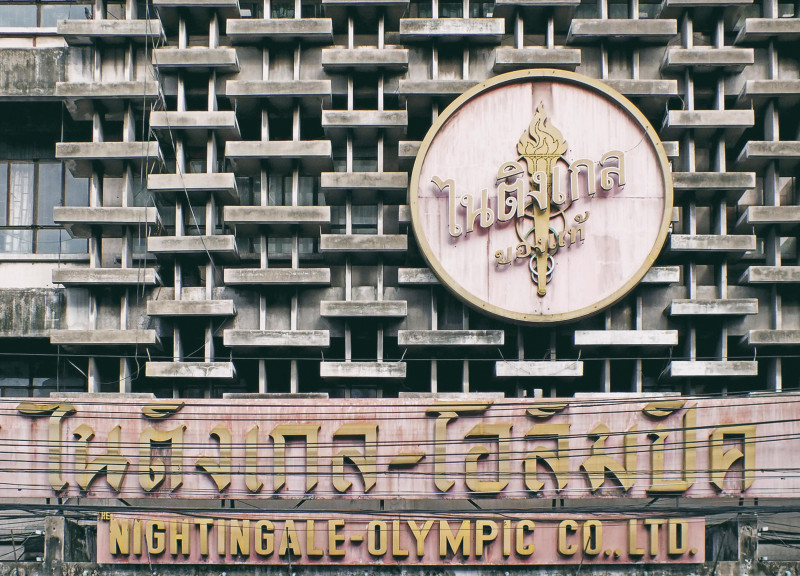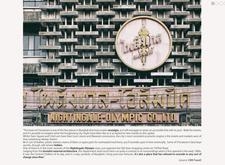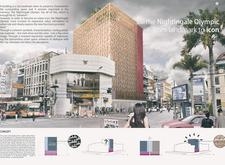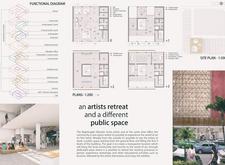5 key facts about this project
**Overview**
Located in Bangkok's Chinatown, the Nightingale Olympic project aims to revitalize a historical department store while enhancing its role as a vibrant urban hub. The design preserves the original architectural identity established in the early 1960s, integrating modern elements to foster interaction with the surrounding urban landscape. This approach reflects a commitment to cultural continuity, urban regeneration, and public engagement, aligning with the evolving identity of Bangkok.
**Spatial Configuration**
The project reimagines the building's spatial organization to create a multi-functional facility catering to artists and the public. At the ground level, the design offers public access with open layouts that combine retail opportunities and social spaces, facilitating fluid movement and interaction. Dedicated exhibition areas provide platforms for showcasing art and projects, enhancing the visitor experience.
The upper levels are specifically designed as artist retreats, incorporating studios and collaborative spaces that promote creativity. Natural light and greenery are integral to common areas and lounges, encouraging engagement among users. The upper design introduces a distinctive vertical emphasis through a lattice façade, enhancing ventilation and natural lighting while contrasting with the mass of the lower structure.
**Materiality and Sustainability**
A diverse palette of materials contributes to the project's aesthetic and environmental objectives. The use of concrete for the structural framework ensures durability, while steel adds resilience within the lattice. Wood is utilized in the cantilever roof to introduce warmth, contrasting with the raw feel of concrete and steel. Large glass elements enhance transparency, connecting interior spaces to the vibrant street life outside. Internal plaster finishes provide a clean and refined appearance.
Sustainable design principles are paramount, employing passive strategies such as cross-ventilation and abundant natural light. By integrating artistic functions and community engagement spaces, the project not only acknowledges its historical context but also promotes active participation, making it a significant addition to the urban fabric of Bangkok.






















































